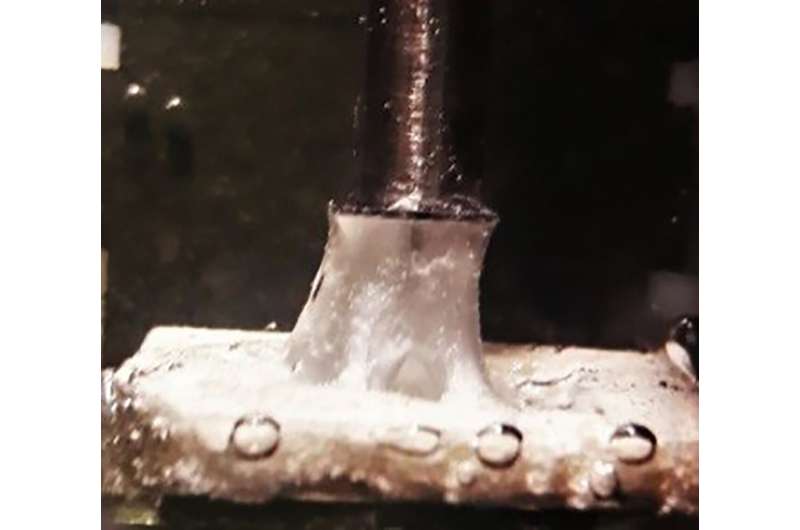New bioinspired glue bonds any surface underwater

Underwater adhesion is technically challenging because of the presence of water, the worst enemy for any glue. Now, scientists from Wageningen University & Research have developed an injectable adhesive able to bond to many surfaces underwater.
Water drastically weakens the mechanical properties of an adhesive and prevents good contact with the surface. This strongly limits the development of injectable adhesives for wet environments, such as the human body—soft tissue repair and wound closure would have much to gain from the development of glues to replace patient and surgeon-unfriendly techniques such as suturing and stapling.
Inspired by nature
Pressure-sensitive adhesives work effectively on almost any dry surface. But as soon as the surface gets wet, its performance is greatly undermined. However, this challenge was solved a long time ago by many natural organisms such as mussels and sandcastle worms. These underwater creatures are able to release a fluid phase underwater. This substance successively hardens due to a change in the environmental conditions (pH, ionic strength), enabling the organisms to attach to surfaces. The natural glue is mainly composed of oppositely charged protein domains and stored in the form of complex coacervate, a fluid and water-immiscible phase. Researchers from the Wageningen Physical Chemistry and Soft Matter group have used these creatures as a source of inspiration for the development of a new glue that solves most of the challenges associated with underwater adhesion.
The adhesive is prepared by mixing aqueous solutions of oppositely charged polymers modified with thermosensitive units. The material, which is liquid-like at room temperature, turns immediately into a solid when the temperature rises above 32 degrees C, when the thermoresponsive chains get together and collapse, making the adhesive much tougher.
When tested underwater, the material shows impressive adhesive properties, sticking strongly to surfaces like glass, teflon or charged surfaces. The developed glue is therefore an ideal candidate for gluing tissues inside the human body, where the temperature of the environment would trigger an immediate setting without the insertion of any additional chemical species. In addition to that, the material is easy to inject, given its low viscosity at room temperature, and does not disperse in the environment since it is water-immiscible.
The researchers are now working on the optimization of the material properties in order to obtain a even better performance which would allow them to start testing the adhesive properties on real biological tissues.
More information: Marco Dompé et al. Thermoresponsive Complex Coacervate‐Based Underwater Adhesive, Advanced Materials (2019). DOI: 10.1002/adma.201808179
Journal information: Advanced Materials
Provided by Wageningen University





















